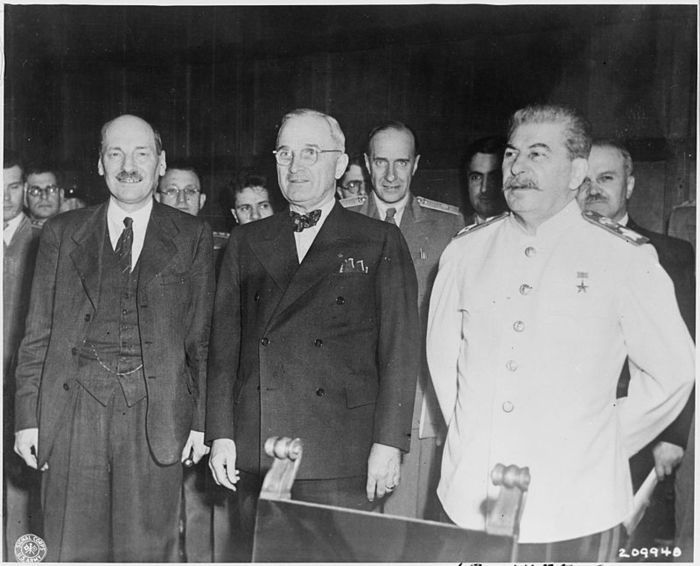How and why did the Cold War begin?
Cold War: The dramatic turn in Western attitudes towards the USSR is caused by two events in 1948 - the coup d'état in Czechoslovakia and the beginning of the Berlin blockade.

By May 8, 1945, the three allies—the United States (US), the United Kingdom, and the Union of Soviet Socialist Republics (USSR)—had the common goal of defeating Nazi Germany. But what to do next: what should be the future development of Europe, and how should the relationship between liberal democracies and the Soviet superpower be shaped?
Summary
The Great Alliance — the United Kingdom, the United States, and the USSR—could only exist as a common enemy. After the defeat of Nazi Germany, ideological contradictions were too great to agree on the future of Europe.
The biggest controversy between the former allies was about the future of the Central European and Balkan countries — the US and Great Britain were aimed at strengthening the democratic system and the USSR was about establishing Soviet regimes.
Already in the first months after the war, the Soviet Army's occupied countries began with an initially covert but later revealed Sovietization policy. USSR policy was unacceptable to lead British and US politicians. However, in the first years after the war, active anti-politics lacked public support.
The dramatic turn in Western attitudes towards the USSR is caused by two events in 1948 — the coup d'état in Czechoslovakia and the beginning of the Berlin blockade. The anti-expansionist policy of the USSR is becoming popular. A series of decisions — the establishment of the Federal Republic of Germany, the establishment of NATO, the approval of the Marshall Plan — strengthen the unity of the Western democratic countries. Meanwhile, with the support of the USSR, the local communists are closing their power in the countries occupied by the Red Army. Two hostile blocks have formed and the Cold War begins.




